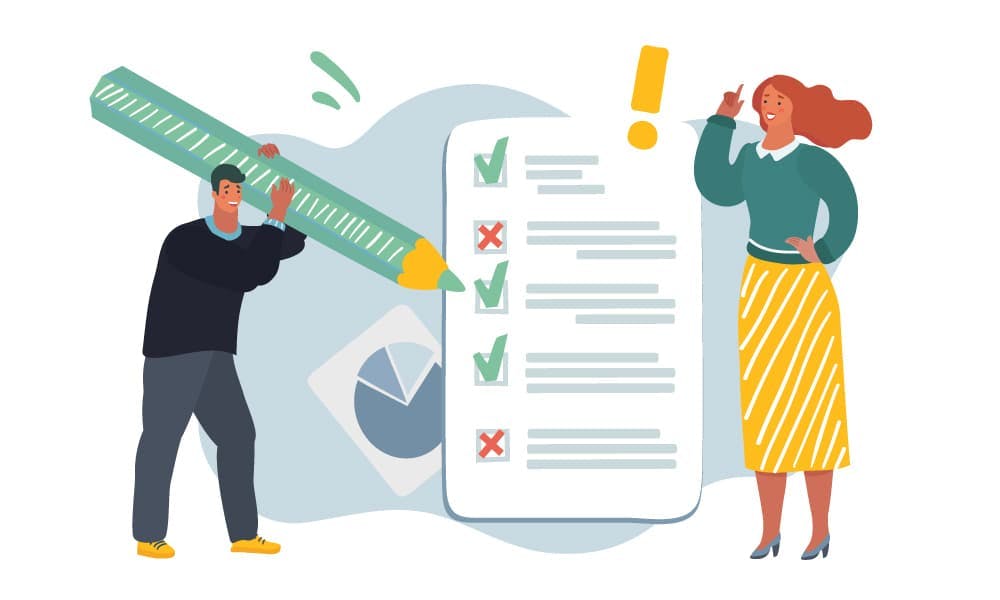Ensuring that products and services are usable by individuals with disabilities is not only a legal requirement but also a moral imperative. One essential document that plays a key role in this context is the Voluntary Product Accessibility Template (VPAT). This article aims to provide a comprehensive understanding of VPATs, their significance, and how they fit into the broader framework of digital accessibility.
What is a VPAT?
A Voluntary Product Accessibility Template (VPAT) is a document that outlines how a particular product or service conforms to the accessibility standards set forth in Section 508 of the Rehabilitation Act. Section 508 mandates that federal agencies in the United States procure, use, maintain, and develop electronic and information technology (EIT) that is accessible to people with disabilities. A VPAT is a self-disclosure document created by the product vendor or developer to communicate the extent of compliance with these standards.
Who Needs a VPAT?
While the requirement to create a VPAT is tied to federal procurements, any organization aiming to provide inclusive products and services should consider creating one. Private sector companies, educational institutions, and government agencies at various levels may request or require a VPAT as part of their procurement process. It serves as a valuable tool for organizations to assess the accessibility features of a product or service before making a purchasing decision.
What is VPAT Used For?
The primary purpose of a VPAT is to communicate the accessibility features of a product or service. It allows potential buyers or users, especially those with disabilities, to understand how well the product aligns with the Section 508 standards. Additionally, a VPAT assists procurement officers in making informed decisions by providing a clear overview of the product's accessibility features, allowing them to fulfill legal obligations and foster inclusivity.
Is a VPAT Mandatory?
While creating a VPAT is not mandatory for all products or services, it becomes obligatory when dealing with federal procurements. Federal agencies are required to purchase accessible technology, and vendors must submit a VPAT to demonstrate the product's compliance with Section 508 standards. Failure to provide a VPAT may result in a vendor being excluded from consideration in the procurement process.
What Are Different Types of VPAT?
There are three primary types of VPATs:
-
VPAT 2.4: The latest version as of the last update, reflecting the most recent accessibility standards.
-
VPAT 2.3: The preceding version, still in use for products developed or procured before the adoption of VPAT 2.4.
-
VPAT 508 (Legacy): The original VPAT format, now considered outdated, but still relevant for historical purposes.
The specific version required may be dictated by the procuring organization or government agency.
How to Fill Out a VPAT
Filling out a VPAT involves a detailed examination of the product's features and functionalities against the Section 508 standards. The document is structured to address each subsection of the standards, providing a clear indication of compliance or non-compliance for each criterion. The process typically involves collaboration between development, testing, and accessibility teams to ensure accuracy and completeness.
What is the Difference Between a VPAT and an ACR?
A VPAT focuses on the accessibility of a product or service, providing a comprehensive overview of its compliance with Section 508 standards. On the other hand, an Accessibility Conformance Report (ACR) is a more detailed and standardized document used to communicate the specific technical details of a product's accessibility features. While a VPAT is often a summarized overview, an ACR delves into the granular details of how each requirement is met.
Section 508 Compliance Framework
The Section 508 standards are organized into several sections, covering different aspects of accessibility. These include requirements for software applications, operating systems, web-based information and applications, telecommunications products, video and multimedia products, and self-contained, closed products.
Testing Methodologies
To assess Section 508 compliance, various testing methodologies are employed. Automated tools, manual testing, and user testing all play critical roles in evaluating the accessibility features of a product. The combination of these methods ensures a thorough examination of the product's usability by individuals with disabilities.
Conformance Levels Demarcation
The VPAT includes a conformance section indicating the level of compliance for each criterion. The three conformance levels are:
-
Supports: The product meets the accessibility criterion.
-
Partially Supports: The product meets some, but not all, aspects of the accessibility criterion.
-
Does Not Support: The product does not meet the accessibility criterion.
This clear demarcation allows procurement officers to quickly assess the overall accessibility of the product.
Accessibility Modes Deconstruction
Understanding the accessibility modes is crucial for accurately completing a VPAT. These modes include keyboard accessibility, voice command support, compatibility with screen readers, and other features that enhance usability for individuals with various disabilities.
Section 508 Compliance Mandate
Section 508 of the Rehabilitation Act mandates federal agencies to ensure that their electronic and information technology is accessible to people with disabilities. This includes the development, procurement, and use of such technology.
Mandatory VPAT Submission for Federal Procurements
Federal agencies are required to include VPATs in their procurement documentation for EIT. Vendors must submit a VPAT with each product or service proposal to demonstrate their commitment to accessibility and adherence to Section 508 standards.
Conclusion
VPATs play a crucial role in promoting digital accessibility by providing a standardized method for vendors to communicate their product's adherence to Section 508 standards. The comprehensive nature of VPATs allows federal agencies to make informed decisions in their procurement processes, fostering an inclusive approach to technology development and acquisition. As technology continues to advance, the continued emphasis on accessibility remains paramount for ensuring equal access and opportunities for all users.
